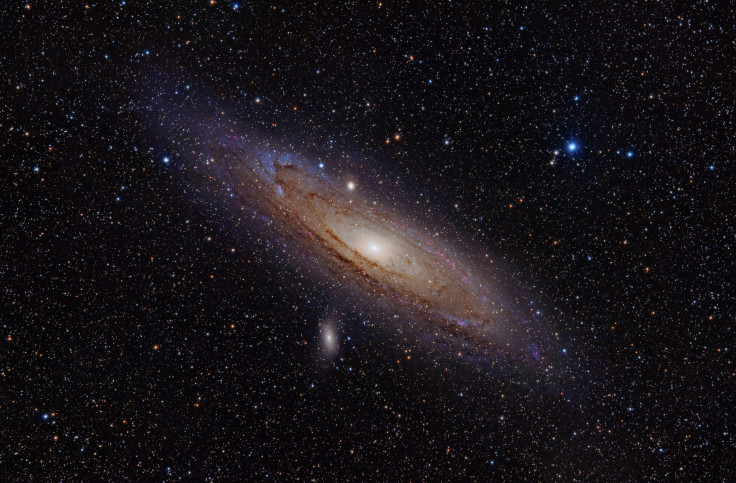Alien Life Found? What Scientists Discovered After Searching 100,000 Galaxies For Signs Of Extraterrestrials

Astronomers have left no stone unturned in the ongoing search for extraterrestrials, having recently scanned some 100,000 distant galaxies for signs of advanced lifeforms. What they discovered might disappoint avid alien hunters – there were no Martian civilizations or towering metropolises in sight – but could pave the way for future deep-space exploration.
The study, published Wednesday in Astrophysical Journal, was one of the first to use NASA’s Wide-field Infrared Survey Explorer satellite, or WISE, to measure the heat radiating from galaxies outside the Milky Way. Out of the 100,000 galaxies studied, 50 of them had “unusually high levels” of mid-infrared radiation. Scientists said that was probably the result of natural phenomenon.
"The idea behind our research is that, if an entire galaxy had been colonized by an advanced spacefaring civilization, the energy produced by that civilization's technologies would be detectable in mid-infrared wavelengths -- exactly the radiation that the WISE satellite was designed to detect for other astronomical purposes," lead researcher Jason T. Wright, an assistant professor of astronomy and astrophysics at Penn State University in State College, Pennsylvania, said in a statement. "As we look more carefully at the light from these galaxies we should be able to push our sensitivity to alien technology down to much lower levels, and to better distinguish heat resulting from natural astronomical sources from heat produced by advanced technologies.” He added that the study was “just the beginning.”
The galaxies surveyed were billions of years old, meaning they’ve had plenty of time for life to take hold, researchers said. The investigation might not have produced the kind of results many had hoped for, but researchers did detect other “new objects” around the Milky Way worthy of further exploration. Among the discoveries were a bright nebula around a nearby star and a puzzling cluster of objects in a patch of sky previously thought to be empty.
“They are almost certainly natural astronomical phenomena, but we need to study them more carefully before we can say for sure exactly what's going on,” said study co-author Steinn Sigurdsson, professor of astronomy and astrophysics at Penn State's Center for Exoplanets and Habitable Worlds.
The search for signs of life beyond Earth has taken astronomers to the far corners of the known universe. Earlier this month, scientists with NASA predicted that alien life would be found “in our lifetime.” They went on to clarify that any extraterrestrials encountered probably wouldn’t resemble the aliens of Hollywood fantasy, but more like tiny microbes.
Last year, astronomers found that the region near a star in which water can exist as a liquid – an area commonly referred to in astronomy as the “habitable zone” – was actually wider than previously believed. The finding means that more planets exist within habitable zones throughout the universe, meaning there are more opportunities for water – and life – to exist beyond the Milky Way.
© Copyright IBTimes 2024. All rights reserved.












